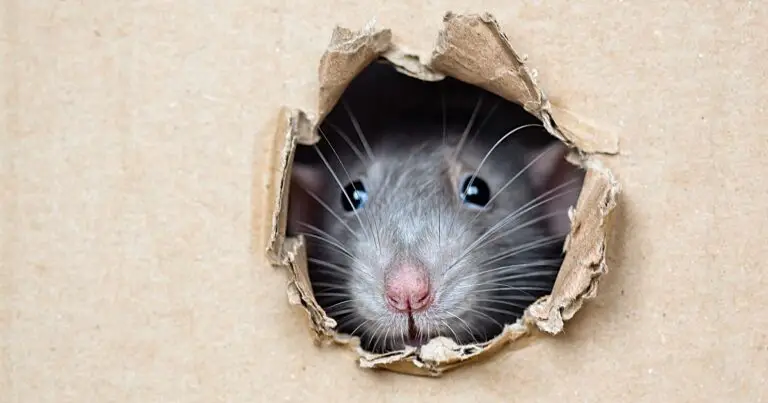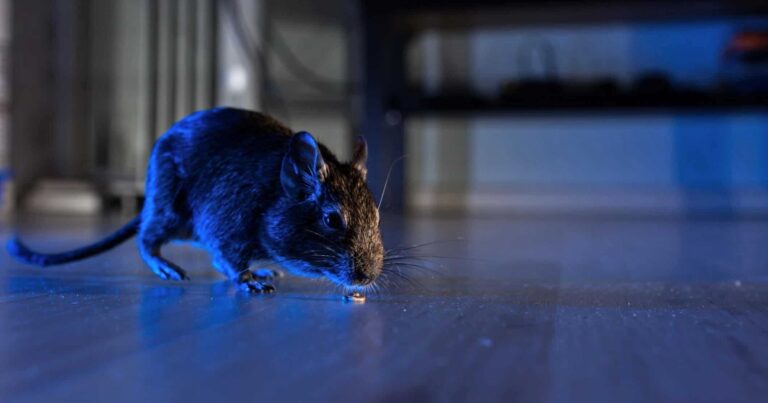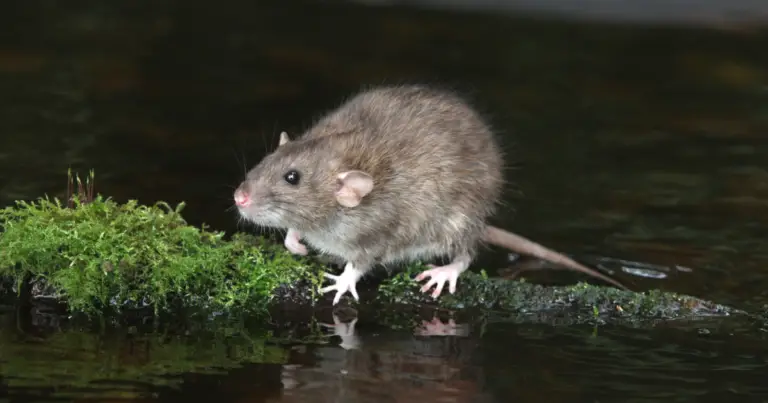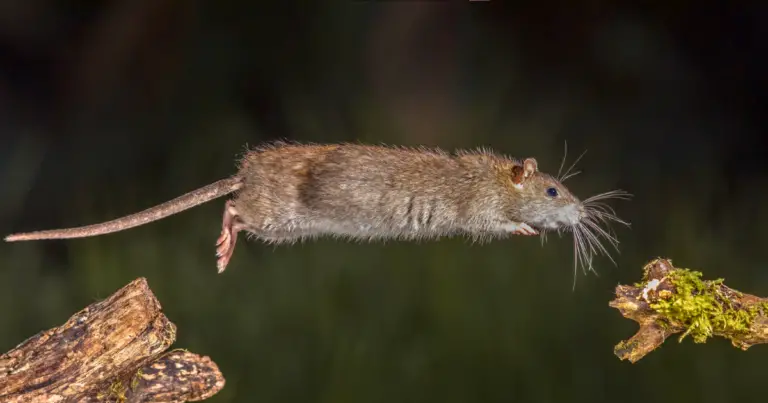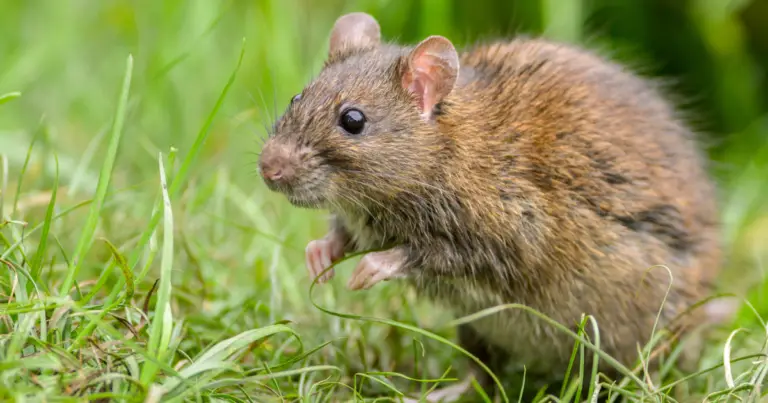The Biggest Rat in the World (Gambian Pouched Rat)
Rats are some of the most fascinating creatures on the planet. They come in all shapes and sizes, from the small and nimble city rats to the larger and more exotic species found in the wild. With that on the top of mind, what is the biggest rat in the world? Among the many species of rats, the Gambian pouched rat stands out as the largest in the world.
This impressive creature has captured the attention of scientists, animal lovers, and enthusiasts alike, due to its remarkable size, unique characteristics, and fascinating behavior. In this article, we will explore the world of the Gambian pouched rat, uncovering its history, biology, and ecology, and learning why this amazing animal is so important to the world we live in.
So, whether you’re a rat lover, a conservationist, or simply curious about the natural world, join us as we dive into the world of the biggest rat in the world – the Gambian pouched rat.
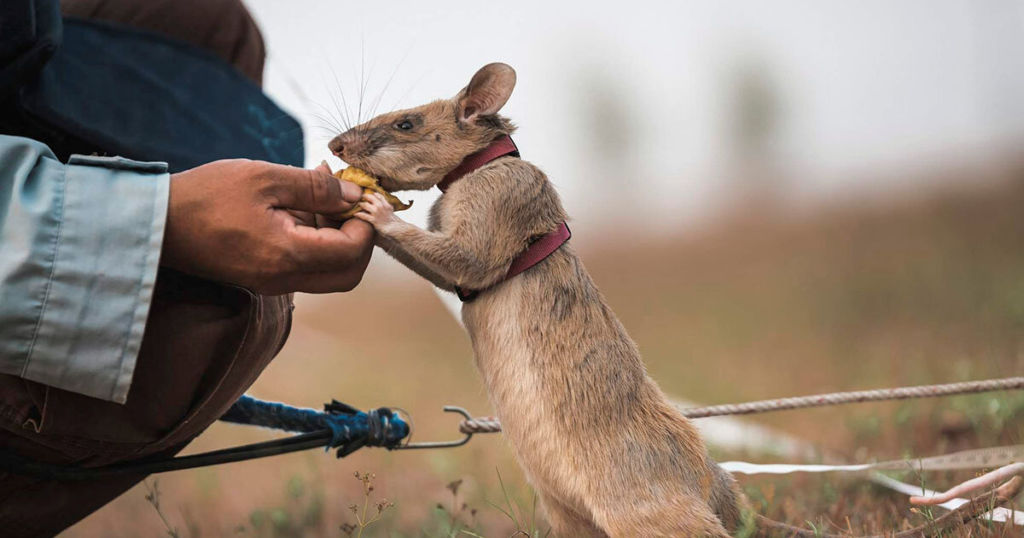
The Gambian Pouched Rat: The Biggest Rat in the World
The Gambian pouched rat, also known as the African giant pouched rat, is a truly remarkable creature. It is truly the biggest rat in the world.
This fascinating species is native to sub-Saharan Africa and is the largest rat in the world. They are typically brown or gray in color and can weigh up to 9 pounds, with an average size of 3 pounds. Their body length can reach up to 18 inches, with an additional 17 inches for the tail. They have a long, furry tail that helps them balance and navigate through their habitat, and their large, dark eyes allow them to see well in low-light conditions.
One of the most striking features of the Gambian pouched rat is the large, pouch-like cheeks that they use to store food and other objects. These pouches can hold up to a third of their body weight, which is a vital adaptation for surviving in their natural habitat. The pouches also play a role in their social behavior, as they use them to exchange food and other items with other rats in their colony.
The Gambian pouched rat is a highly social animal and lives in large groups called colonies. These colonies can contain up to 20 rats, with a dominant male and female leading the group. They are mostly active at night, spending their days sleeping in their burrows or nests, which they build in the ground or in trees. They are omnivores, and their diet consists of a wide variety of foods, including fruits, nuts, insects, and even small animals like lizards and rodents.
Despite their size, Gambian pouched rats are surprisingly agile and quick. They are excellent climbers and swimmers, and can easily navigate through the dense vegetation and waterways of their natural habitat. They are also incredibly intelligent and can learn complex tasks and solve problems quickly. This intelligence has made them highly sought after as detection animals, with many organizations training them to detect landmines and tuberculosis.
Where to Find the Gambian Pouched Rat
The Gambian pouched rat is native to sub-Saharan Africa and can be found in a variety of habitats, including forests, savannas, and agricultural lands. They are particularly common in areas with dense vegetation and plenty of food sources, such as fruits, nuts, and insects. In the wild, they build their nests in the ground, in tree hollows, or in abandoned termite mounds.
Due to their large size and distinctive appearance, Gambian pouched rats are relatively easy to spot in the wild. However, they are primarily active at night, making it more difficult to observe them during the day. If you’re looking to see a Gambian pouched rat in its natural habitat, the best time to look is during the early morning or late evening hours when they are most active.
If you’re not able to travel to sub-Saharan Africa to see these impressive creatures in the wild, you may be able to observe them in captivity. Gambian pouched rats are popular in the pet trade, and many people keep them as pets or work with them in research or conservation efforts. However, it’s important to note that keeping a Gambian pouched rat as a pet requires a significant amount of time, effort, and resources, as they have specific dietary and environmental needs that must be met in order for them to thrive.
Unique Characteristics of the Gambian Pouched Rat
The Gambian pouched rat is a truly unique and fascinating species, with a number of distinctive characteristics that set it apart from other rodents. Perhaps the most notable of these characteristics is its size. As the biggest rat in the world, the Gambian pouched rat can grow up to 9 pounds in weight, with an average size of 3 pounds. Its body length can reach up to 18 inches, with an additional 17 inches for the tail. This impressive size makes it a formidable creature, with few predators that are able to take it down.
Another unique feature of the Gambian pouched rat is its pouch-like cheeks, which it uses to store food and other objects. These pouches can hold up to a third of their body weight, allowing them to store food for later when resources are scarce. This adaptation is particularly important in their natural habitat, where food can be difficult to come by at times. In addition to storing food, the pouches also play a role in social behavior, as Gambian pouched rats use them to exchange food and other objects with other rats in their colony.
The Gambian pouched rat is also known for its excellent sense of smell, which is a valuable adaptation in its natural habitat. They use their sense of smell to locate food, mates, and potential threats, and their ability to detect even trace amounts of certain compounds has made them a valuable tool in disease detection efforts. In addition to their sense of smell, Gambian pouched rats have excellent hearing and vision, which allow them to navigate their environment with ease.
Another unique characteristic of the Gambian pouched rat is its intelligence. They are incredibly intelligent creatures, with the ability to learn complex tasks and solve problems quickly. This intelligence has made them highly sought after as detection animals, with many organizations training them to detect landmines and tuberculosis. They are also social creatures, living in large colonies with a dominant male and female leading the group. This social behavior has helped them thrive in their natural habitat, allowing them to work together to find food and protect their young.
Threats to the Survival of the Gambian Pouched Rat
Despite their impressive size and unique adaptations, the Gambian pouched rat faces a number of threats to its survival in the wild. One of the biggest threats is habitat loss and fragmentation, as human development and agricultural activities continue to encroach on their natural habitat. This loss of habitat can lead to a reduction in food availability and nesting sites, which can ultimately impact their ability to survive and reproduce.
Another significant threat to the Gambian pouched rat is the illegal pet trade. Due to their large size and distinctive appearance, Gambian pouched rats are often sought after as exotic pets. However, capturing these animals from the wild for the pet trade can have devastating consequences for their populations, particularly if the capture is not done sustainably or if the animals are not kept in appropriate conditions.
In addition to these threats, the Gambian pouched rat also faces predation from a number of different predators, including snakes, birds of prey, and other carnivores. Climate change and disease are also emerging threats to their survival, as changing weather patterns and the spread of new diseases can impact their food availability and health.
Conservation efforts are underway to help protect the Gambian pouched rat and ensure their survival in the wild. These efforts include habitat conservation and restoration, as well as sustainable capture and breeding programs for the pet trade. In addition, many organizations are working to train Gambian pouched rats for disease detection and other purposes, which can help to raise awareness of the species and its unique adaptations.
Conclusion
The Gambian pouched rat is truly a remarkable and unique animal, and its status as the biggest rat in the world only adds to its allure. From its distinctive appearance to its impressive adaptations and important ecological role, there is much to appreciate about this species.
However, the Gambian pouched rat is facing a number of threats to its survival, including habitat loss, the illegal pet trade, predation, climate change, and disease. It is up to all of us to work together to protect this species and ensure its survival in the wild.
By supporting conservation efforts and raising awareness of the importance of the Gambian pouched rat and its unique adaptations, we can help to ensure that this fascinating animal continues to thrive and play its important role in the ecosystems of sub-Saharan Africa. Let us not take for granted the largest rat in the world and instead celebrate its unique qualities and work towards its conservation.


